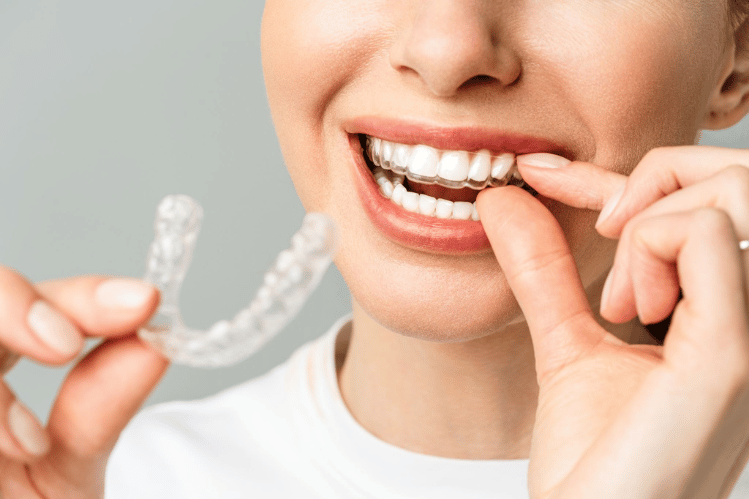Indicators on Legacy Orthodontics You Should Know
Indicators on Legacy Orthodontics You Should Know
Blog Article
Legacy Orthodontics - The Facts
Table of ContentsTop Guidelines Of Legacy OrthodonticsLittle Known Questions About Legacy Orthodontics.Legacy Orthodontics for BeginnersA Biased View of Legacy OrthodonticsA Biased View of Legacy Orthodontics
In addition, we use adjustable therapy schedules, flexible payment alternatives and a fun, pleasurable experience.An orthodontist is a dental expert educated to detect, protect against, and deal with teeth and jaw irregularities. They fix existing problems and are trained to identify troubles that might establish in the future. Orthodontists collaborate with people of any ages, from youngsters to adults. People typically associate a best smile with great health and wellness.
Malocclusion, or misaligned teeth, can result in oral issues, consisting of dental cavity, periodontal disease, and difficult or unpleasant chewing. But not every person is birthed with straight teeth. If you have a poor bite or huge areas between your teeth, you may want to seek advice from a dental expert specializing in orthodontic care.
Not known Factual Statements About Legacy Orthodontics
( Picture Credit: DigitalVision/Getty Images) Orthodontists utilize taken care of and removable oral devices, like dental braces, retainers, and bands, to alter the position of teeth in your mouth. Orthodontic treatment is for oral irregularities, consisting of: Jagged teethBite problems, like an overbite or an underbiteCrowded teeth or teeth that are as well far apartJaw misalignmentThe objective of orthodontic treatment is to boost your bite.
A healthy bite guarantees you can eat, chew, and speak effectively. While you could assume of orthodontists as primarily for children or teens who need braces, they can deal with oral problems at any age. Orthodontists attend college, dental school, and orthodontic institution. After college graduation, they invest 2 or 3 years in an orthodontic residency program.
All orthodontists are dental professionals, yet not all dental professionals are orthodontists. Orthodontic residency programs use extensive, concentrated direction for dental specialists. They concentrate on two areas: Just how to correctly and safely relocate teeth Just how to properly direct development in the teeth, jaw, and faceOnce an orthodontist has actually completed training, they have the alternative to become board licensed.
Legacy Orthodontics for Beginners
Imbalance, or malocclusion, is the most usual factor individuals see an orthodontist. It is hereditary and is the result of size differences in between the top and reduced jaw or in between the jaw and teeth. Malocclusion brings about tooth overcrowding, a misshapen jaw, or uneven bite patterns. Malocclusion is generally treated with: Your orthodontist affixes steel, ceramic, or plastic square bonds to your teeth.
Some people need a headgear to aid relocate teeth right into line with pressure from outside the mouth. A retainer is a customized tool that maintains your teeth in place.
They can produce extra room in the mouth without having to pull teeth. Orthodontists utilize wires, medical screws, or plates to support your jaw bone.
You might need to see an orthodontist if you have: Crowding or otherwise enough area for all of your teethOverbite, when your top teeth come over your base teethUnderbite, when your base teeth are also much forwardSpacing or issues with gapsCrossbite, which is when your top teeth fit behind your bottom teeth when your mouth is closedOpen bite or an upright space in between your front bottom and top teethMisplaced midline, when the facility of your bottom and Get More Information upper teeth do not align Correcting an oral malocclusion can: Make attacking, eating, and speaking easierImprove the proportion of our face and your overall appearanceEase pain from temporomandibular joint problemsSeparate your teeth and make them less complicated to clean, aiding prevent dental caries or tooth cavities It's commonly a dental expert that initially notices misaligned teeth during a routine examination.
What Does Legacy Orthodontics Mean?

During your very first orthodontic consultation, you'll likely have: A dental examPhotos taken of your face and smileDental X-raysPanoramic (360 degree) X-rays of your face and headImpressions to develop molds of your teethThese tests will help your orthodontist understand exactly how to wage your therapy. invisalign. An orthodontist is a dental practitioner that's had training to treat your teeth and jaw
Orthodontists might do surgery, exams,X-rays,and more to help you achieve an extra comfy, much healthier smile. An orthodontist is focused on your bite, so something like a cracked tooth would be handled by a dental practitioner. Orthodontists are dental professionals however not all dental experts are orthodontists. Orthodontists are concentrated on your bite, or the method your teeth meshed, and the straightness of your teeth.
Ever wondered how celebs always seem to have flawlessly aligned teeth? The solution usually exists in the experienced hands of an orthodontist. However what specifically does an orthodontist do? Orthodontists are dental professionals that concentrate on remedying irregularities in the teeth and jaws. Their know-how exceeds just producing a stunning smile; it includes enhancing your general dental health and function.
The 2-Minute Rule for Legacy Orthodontics

, orthodontists have a diverse toolkit at their disposal. These tried-and-true dental braces use a system of brackets bonded to the teeth and attached by cables.
These removable trays are tailor-made to progressively move the teeth's setting. In instances of narrow jaws, palatal expanders can be utilized to develop area for proper tooth alignment.
Report this page